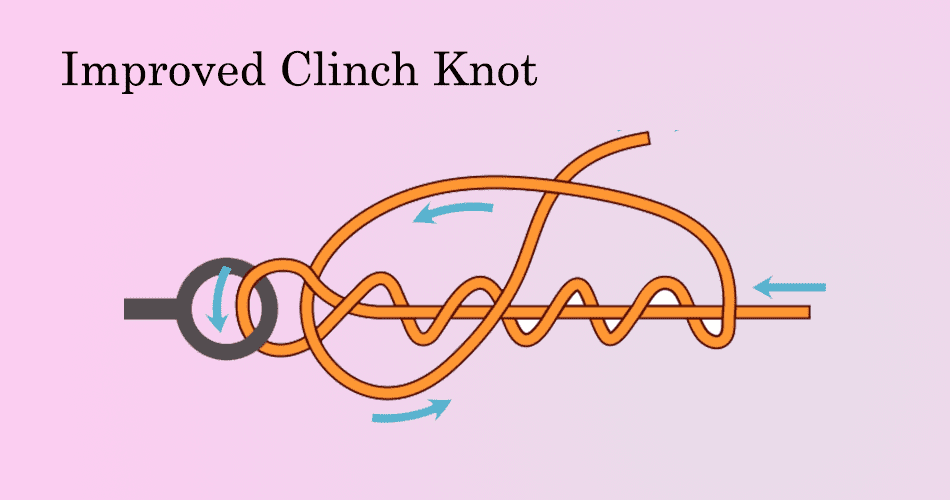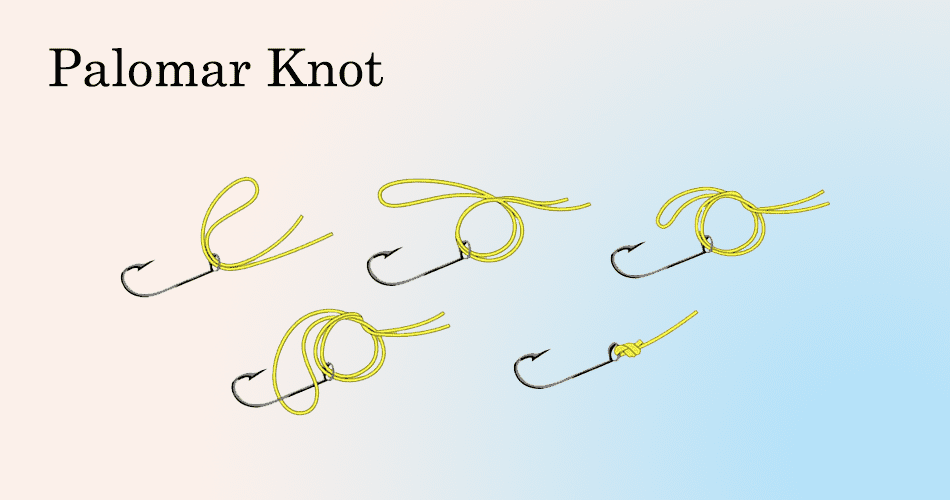
When it comes to fishing, knowing how to tie proper knots is essential for success. Whether you’re a seasoned angler or just starting out, mastering easy fishing knots is a fundamental skill that can greatly enhance your fishing experience. These knots serve as the connection between your fishing line, hooks, lures, and other terminal tackle. They ensure that your equipment remains secure, reliable, and strong, ultimately increasing your chances of landing that prized catch.
The importance of learning easy fishing knots cannot be overstated. By knowing the right knots and how to tie them correctly, you can prevent frustrating situations like losing your bait, lures, or even the fish you’ve worked so hard to hook. A well-tied knot can withstand the power struggles of a fish, keeping your line intact and allowing you to reel in your catch with confidence.
Mastering basic fishing knots also provides versatility in different fishing scenarios. Different knots are suitable for specific purposes, such as attaching hooks, connecting lines, or securing swivels. By expanding your knowledge of easy fishing knots, you can adapt to various fishing techniques, species, and environmental conditions. This versatility opens up a world of possibilities and enables you to tackle different fishing situations with ease.
In this article, we will explore three essential and easy fishing knots: the Improved Clinch Knot, Palomar Knot, and Uni Knot. We will provide step-by-step instructions, discuss their applications and advantages, and offer valuable tips to help you tie these knots effectively.
Benefits of Mastering Basic Fishing Knots

Mastering basic fishing knots offers numerous benefits that can significantly enhance your fishing experience. Here are the key advantages of becoming proficient in these knots:
Increased Success Rate: When you master basic fishing knots, you increase your chances of success on the water. Securely tying knots ensures that your tackle remains intact, preventing lost lures, hooks, or fish due to weak connections.
Improved Confidence: Knowing that you have tied your knots correctly instills confidence in your fishing setup. This confidence allows you to focus on your fishing technique and enjoy the experience without worrying about equipment failure.
Versatility and Adaptability: Basic fishing knots provide you with versatility in various fishing scenarios. Whether you’re fishing in freshwater or saltwater, targeting different species, or employing different techniques, having a repertoire of basic knots allows you to adapt and adjust your setup accordingly.
Efficient Tackle Changes: Mastering basic fishing knots enables quick and efficient tackle changes. Being able to tie and untie knots easily allows you to adjust your rig, switch lures, or replace damaged hooks swiftly, maximizing your time on the water.
Foundation for Advanced Knots: Basic fishing knots serve as a foundation for more complex and specialized knots. By mastering the basics, you lay the groundwork for learning and using advanced knots that cater to specific fishing situations or techniques.
By dedicating time to practice and master basic fishing knots, you elevate your fishing skills, improve your success rate, and gain confidence in your tackle. The benefits extend beyond just tying knots, enhancing your overall fishing experience, and increasing your enjoyment on the water.
Improved Clinch Knot

The Improved Clinch Knot is a widely used and reliable fishing knot known for its simplicity and strength. It is an essential knot for anglers of all skill levels. Here’s a comprehensive look at the Improved Clinch Knot:
Step-By-Step Instructions
· Start first with threading the tag end of your line through the eye of the lure or hook.
· Take the tag end and wrap it around the standing line for about 5 to 7 times, moving away from the eye of the hook.
· Take the tag end and thread it through the small loop created just above the eye of the hook.
· Next, thread the tag end through the larger loop formed by the line and pull it all the way through.
· Moisten the knot with water or saliva to lubricate it, allowing for smoother tightening.
· Hold the standing line and the tag end, and slowly pull them in opposite directions. Ensure that the wraps are tight and snug against the eye of the hook or lure.
· Trim the excess tag end, leaving a small tag for added security.
Applications and Uses
The Improved Clinch Knot is versatile and suitable for various fishing applications:
Attaching Hooks: It is commonly used for securing hooks to the fishing line. The knot’s strength and reliability ensure that the hook remains securely in place, even when faced with the resistance of a fish.
Connecting Lures: The Improved Clinch Knot is ideal for connecting lures, such as artificial baits, to the fishing line. It provides a secure connection that allows the lure to move naturally in the water.
Advantages and Tips for Tying the Improved Clinch Knot

The Improved Clinch Knot offers several advantages:
Simplicity: It is a relatively simple knot to tie, making it accessible to anglers of all skill levels.
Strength: The knot provides excellent strength and reliability, minimizing the risk of equipment failure during fishing.
To ensure the best results with the Improved Clinch Knot, consider the following tips:
· Wetting the line before tightening the knot reduces friction and allows for smoother tightening.
· When trimming the excess tag end, leave a small tag to provide an additional level of security.
The Improved Clinch Knot is a go-to knot for anglers worldwide. By mastering this knot, you can confidently secure your hooks and lures, increasing your chances of success on the water.
Palomar Knot

The Palomar Knot is a popular fishing knot known for its strength and simplicity. It is highly regarded for its reliability, making it a favourite among anglers for various fishing applications. Here’s an in-depth look at the Palomar Knot:
Step-By-Step Instructions
· Double about 6 inches of the fishing line and form a loop.
· Pass the loop through the eye of the hook or lure.
· Tie a loose overhand knot with the doubled line, allowing the loop to hang loose.
· Pass the hook through the above loop.
· Hold the hook or lure and the loose end of the line, and pull both simultaneously to tighten the knot.
· Once tightened, wet the knot with water or saliva to lubricate it for a smoother and more secure cinching.
· Pull the standing line and the tag end in opposite directions to fully secure the knot.
· Trim the excess tag end, leaving a small tag for added security.
Key Tips for Tying the Palomar Knot Effectively:
To ensure optimal performance when tying the Palomar Knot, consider the following tips:
· Make sure the loop formed at the beginning is large enough to comfortably pass the hook or lure through.
· Wetting the knot before cinching helps minimize friction and ensures a secure and tight knot.
· Leave a small tag end when trimming the excess line to provide an extra level of security.
Mastering the Palomar Knot is a valuable skill for any angler. Its strength, simplicity, and versatility make it an excellent choice for various fishing situations. By incorporating the Palomar Knot into your repertoire of fishing knots, you can confidently tackle different species and fishing conditions, knowing that your connections are secure and reliable.
Uni Knot

The Uni Knot, also known as the Universal Knot or Duncan Knot, is a versatile and reliable fishing knot that is easy to tie. It is widely used by anglers for its strength and simplicity. Here’s a concise overview of the Uni Knot:
Simple Steps to Tie the Uni Knot
· Pass the line through the eye of the hook or lure and double it back, creating a loop.
· Hold the standing line and the tag end, and create a simple overhand knot around the doubled line and through the loop formed in step 1.
· Repeat step 2, wrapping the line around the doubled line for 4-6 turns.
· Moisten the knot with water or saliva for lubrication and tighten the knot by pulling the tag end and standing line simultaneously.
· Once tightened, trim the excess tag end, leaving a small tag for added security.
Also Read – Best Fishing Knots & Lures of All Time – Fishing Fetch
Additional Tips and Variations
To tie the Uni Knot effectively, consider the following tips:
· Wetting the knot before tightening reduces friction and allows for smoother cinching.
· For added strength, you can make an extra loop around the doubled line before tying the overhand knot in the above steps. This variation is known as the Double Uni Knot.
Mastering the Uni Knot is a valuable skill for any angler. Its simplicity, versatility, and strength make it a go-to knot for various fishing situations. By incorporating the Uni Knot into your knot-tying repertoire, you can ensure reliable connections and increase your chances of success on the water.
The Bottom Line
In conclusion, mastering easy fishing knots is an essential skill for any angler. The introduction to fishing knots highlights their significance in ensuring a successful fishing experience. Knowing the right knots and how to tie them correctly is crucial for securing your tackle, providing strength and reliability, and increasing your chances of landing a catch.
The article explores three fundamental fishing knots: the Improved Clinch Knot, Palomar Knot, and Uni Knot. Each knot is discussed in detail, including step-by-step instructions, applications, advantages, and valuable tips for tying them effectively.
By incorporating these easy fishing knots into your repertoire, you can enhance your fishing skills, increase your success rate, and approach different fishing scenarios with confidence and adaptability.



